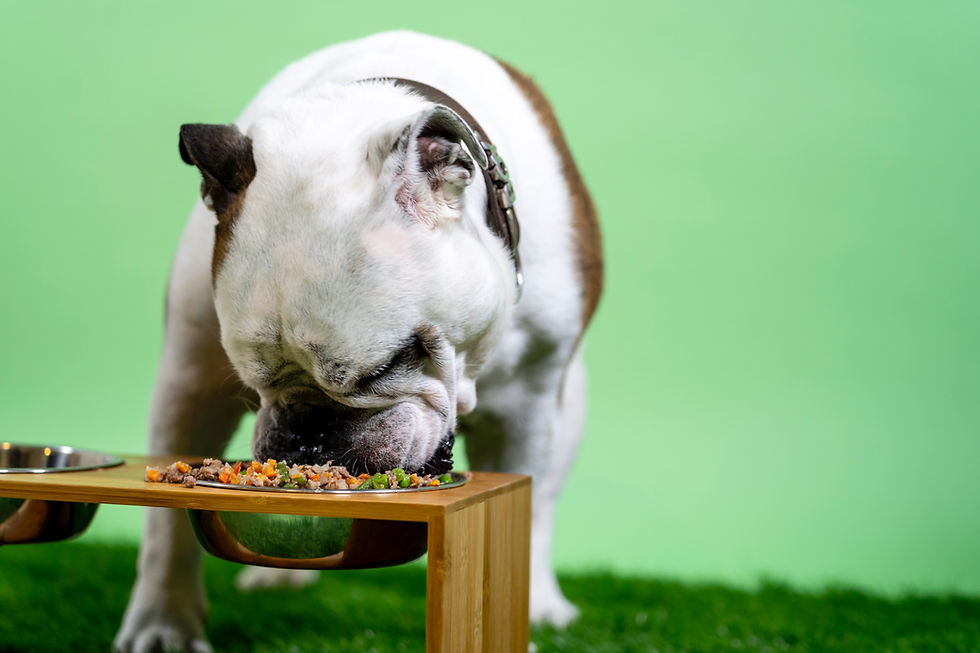Kids and Dogs (why hugging is not always cool).
- The Dogzbody

- Mar 27, 2024
- 3 min read
Lets start with why you need to be with your kids and dogs at all times.

Supervising children around dogs is crucial for many reasons. Firstly, it ensures the safety of both the children and your dogs. Children may unknowingly engage in behaviours that can startle or provoke a dog, leading to a potential bite or injury. Additionally, dogs may not always understand children's actions or intentions, which can result in miscommunication or accidents. Supervision also allows adults to intervene promptly if any risky situations arise and to teach children proper etiquette and respect for a dog's boundaries. Obviously the older a child the better they can communicate with a dog, they will learn by example by copying adults around them interacting with dogs. That said, guiding older children around dogs is still a critical part of ensuring safe interactions.

Teaching Boundaries to a child
Teaching your child to respect a dog's boundaries is essential for their safety and the well-being of the dog. Here are some steps to achieve this:
Lead by Example: Model appropriate behaviour around dogs yourself. Show respect for your dog's space, avoid rough play, and demonstrate calm interactions.
Educate About Body Language: Teach your child to recognize signs of stress or discomfort in dogs, such as growling, backing away, or showing teeth. Explain that these are signals that the dog needs space.
Set Clear Rules: Establish rules for interacting with the dog, such as no pulling ears or tail, no climbing on the dog, and no bothering the dog while eating or sleeping.
Supervise Interactions: Always supervise children when they are around your dog. Intervene if your child is not following the rules or if the dog seems uncomfortable.

Encourage Gentle Touch: Show your child how to pet your dog gently and in areas where your dog enjoys being touched, such as the back or chest.
Teach Boundaries: Explain that your dog's bed or crate is their private space and should be respected. Children should not disturb a dog when they are in these areas.
Reward Positive Behaviour: Praise your child when they demonstrate respectful behaviour towards your dog. Balanced reinforcement can encourage them to continue behaving appropriately.
Discuss Consequences: Help your child understand the consequences of not respecting your dog's boundaries, such as your dog becoming scared or defensive.
Hugs and Children
Children should avoid hugging dogs for several reasons, although it may seem like a cool thing to do, your child is looking for affection back from your dog it simply is not advisable to do and here's way:
Discomfort for the Dog: Many dogs find hugs uncomfortable or even threatening. Dogs communicate primarily through body language, and being hugged can feel restrictive or intimidating to them.
Risk of Misinterpretation: Hugging can be misinterpreted by the dog as a form of restriction or aggression. This may lead to defensive behaviours such as growling or biting, especially if the dog feels trapped.
Stress for the Dog: Hugging can increase a dog's stress levels, particularly if they are already feeling anxious or uncomfortable in a particular situation. This stress can show in various ways, including trembling, panting, or trying to escape.

Safety Concerns: Hugging a dog puts a child at risk of being bitten, especially if the dog becomes startled or feels threatened. Children may inadvertently put their face too close to the dog's mouth, increasing the risk of injury.
Respect for the Dog's Space: Allowing dogs to have their own personal space and respecting their boundaries is essential for their well-being. Teaching children to interact with dogs in ways that are comfortable for the dog promotes a positive relationship between them.
Instead of hugging, children can show affection to dogs in other ways, such as gentle petting or playing interactive games. It's crucial to supervise interactions between children and dogs and teach children to recognize and respect the dog's body language.




Comments